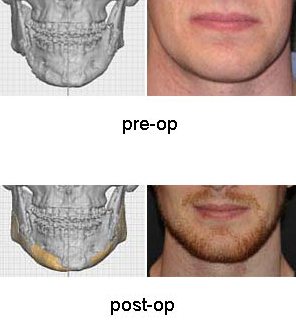It used to be that nearly every article of clothing was custom-made, from shirts to hats to shoes; people made them themselves, or visited the tailor, hatter or cobbler. Today, custom clothing is the exception rather than the rule, and for a truly custom suit, you would visit a bespoke clothier. Bespoke is a term used to describe an item custom-made to the buyer's specification. While the term used to be applied only to clothing, it is now applied to items ranging from prosthetics to computer software, suggesting a high-degree of customization and involvement by the end-user in the design.
While we may insist on customization in items such as cars and clothing, ironically, society has readily accepted the mass production of generic implants used in plastic surgery. However, thanks to technological advances, the days of truly customized plastic surgery, or bespoke plastic surgery, as I refer to it, have arrived.
Computers have impacted nearly every element of our professional and personal lives. Today, they are changing the face of plastic surgery (no pun intended). At the intersection of computer modeling and three-dimensional computed tomography (CT) scans are custom-designed facial implants.
In these procedures, CT images provide data that is transferred to design software to create a customized implant. Using electronic data, a computer-controlled manufacturing system designs a model of the prosthesis, which is then cast into the finished product. Alternatively, an exact physical replica of the skull can be constructed and used as a template for the construction of the preliminary implant, which may be modified further by the surgeon.
These types of implants are especially useful for patients with significant asymmetry and for patients who have had orthognathic surgery and are left with noticeable contour irregularities. Traditionally, orthognathic surgery treats major facial deformities and functional disability, such as TMJ disorders or malocclusion problems. In this procedure, facial bones are osteotomized (cut), and repositioned. Although these movements place the teeth in a better functioning position, they often result in contour irregularities at the osteotomy sites. With the CT data of the skeletal anatomy and special software, implants can be designed to mask the irregularities and provide smooth, symmetric contours.
This patient below had undergone sagittal split osteotomy and sliding genioplasty. He was left with significant deficiencies and asymmetry.
The top row of images shows a 3-D CT image of his mandible after the orthognathic surgery and his mandible.

This bottom row of images shows: a 3-D CT image of his mandible with the custom designed implants and the result of custom implant surgery.
Custom-designed facial implants often appeal to patients without significant asymmetries or irregularities. They request precise enhancement of certain facial features such as the cheekbones, jawline and chin. Patients appreciate the opportunity to see the CT derived image of their present facial skeleton which determines their present "look;" this image gives them better insight into what they might want to enhance. They desire the custom implants for the same reasons that one might choose a bespoke suit as opposed to one "off the rack."